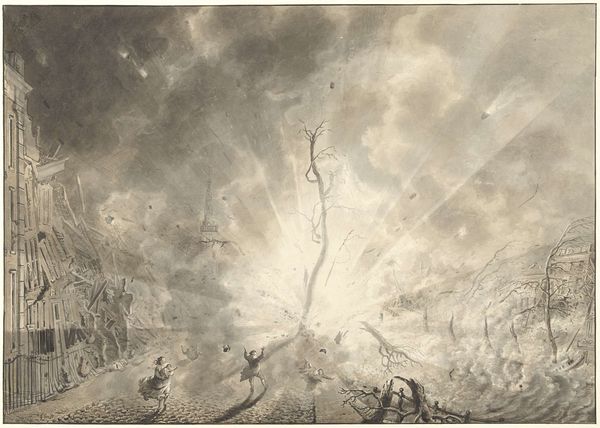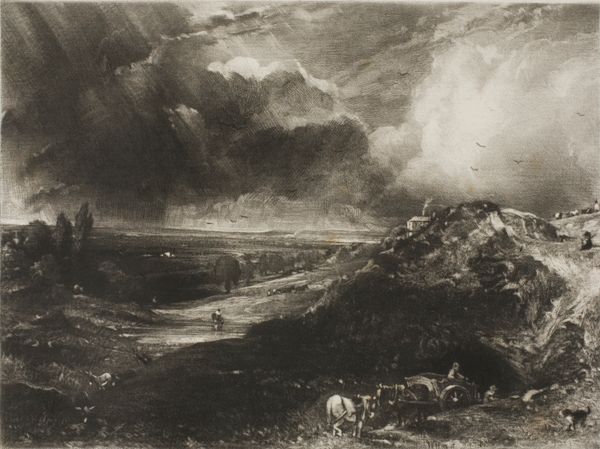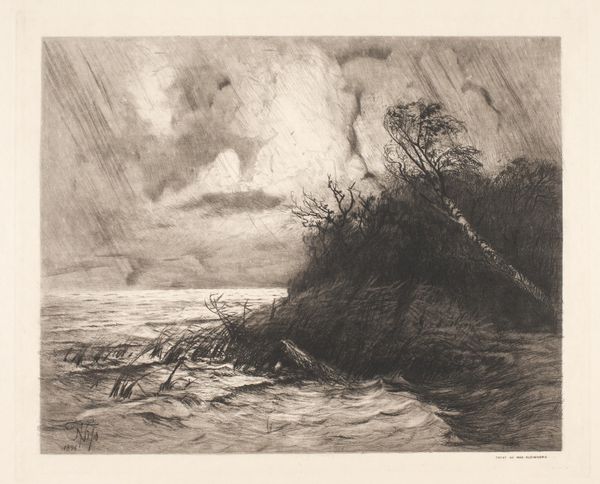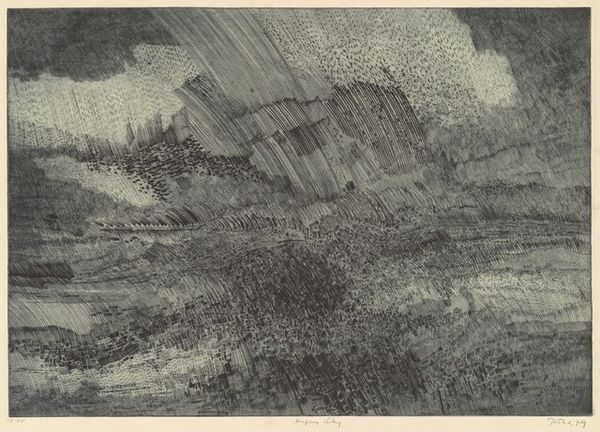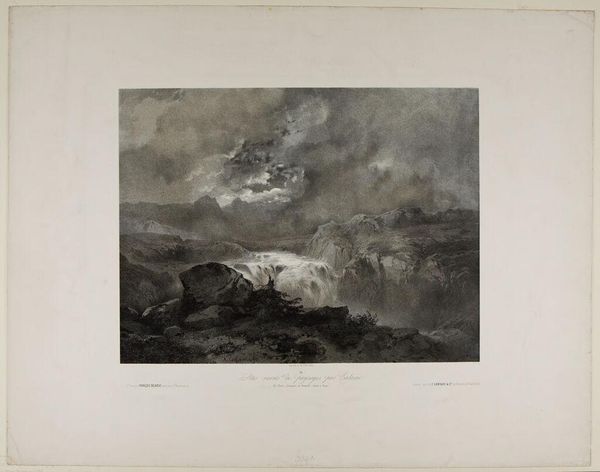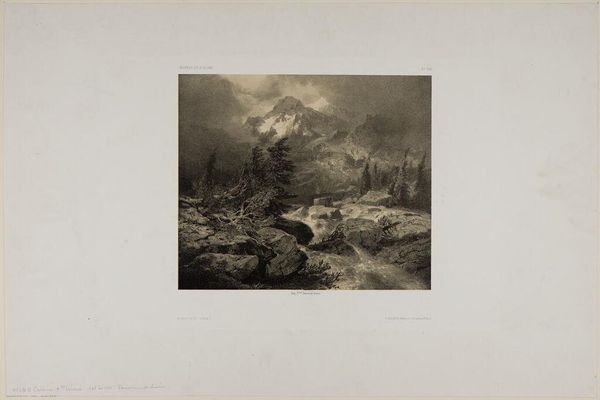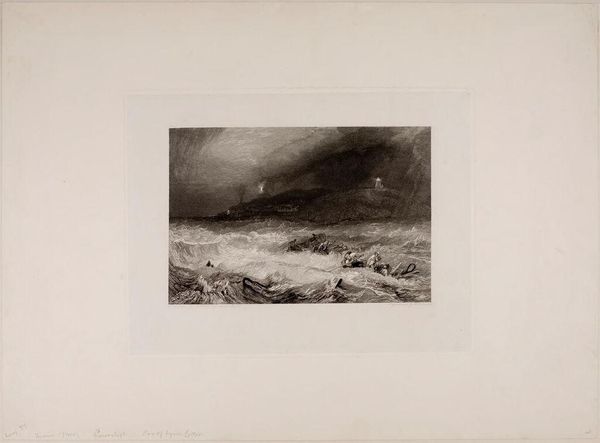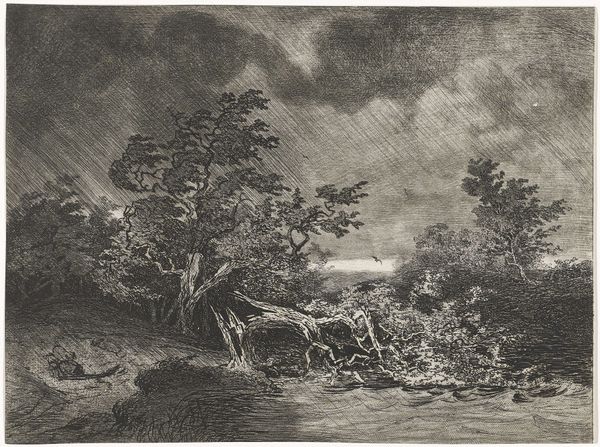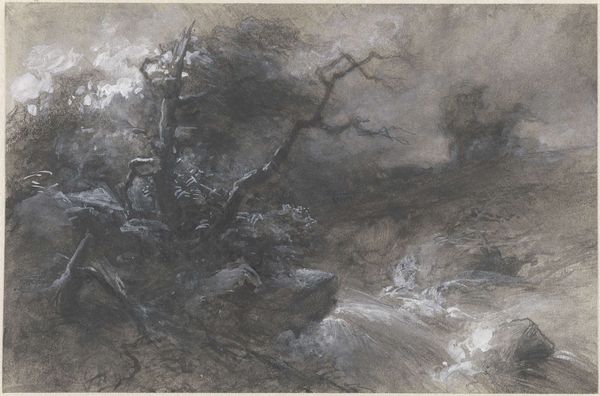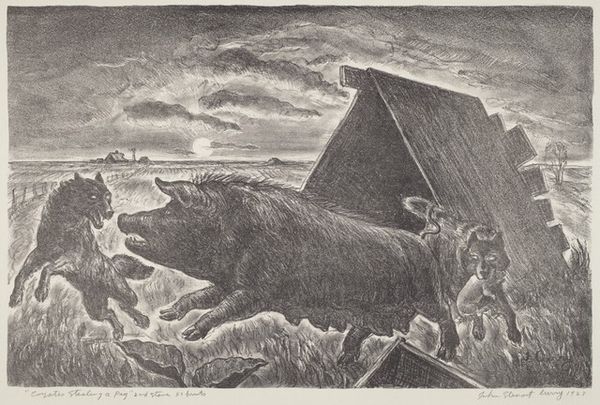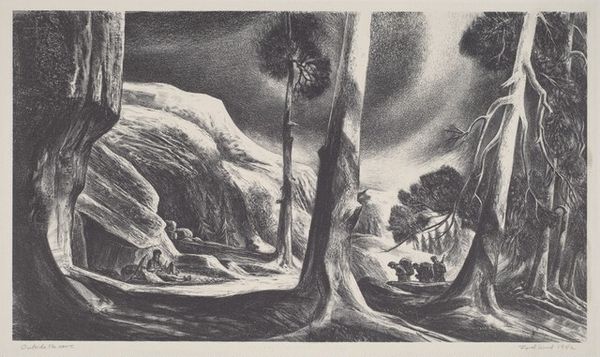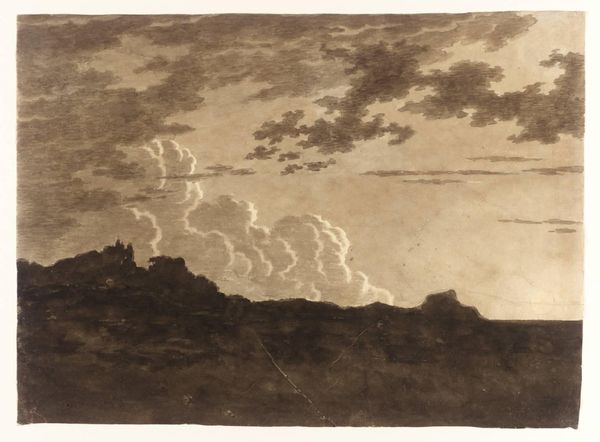
Dimensions: height 261 mm, width 606 mm
Copyright: Rijks Museum: Open Domain
Curator: Before us, we have Johannes Hilverdink's graphite drawing, "Na de Storm," created in 1870. It resides here in the Rijksmuseum. Editor: It’s overwhelmingly melancholic, isn’t it? A desolate scene. The muted grays intensify that feeling of aftermath, of something lost. Curator: Hilverdink often explored Romantic themes in his landscapes. Considering the sociopolitical context of the late 19th century—a time of industrial growth juxtaposed with anxieties about the natural world— this drawing seems to reflect that tension. One sees an untamed, slightly threatening nature here. Editor: Yes, the drama is definitely heightened. The blasted trees seem to writhe against the somber sky, that lonely sun only adds to the feeling of solitude, perhaps even despair. One could examine this image through a post-colonial lens and discuss exploitation of natural resources… Curator: That's an intriguing angle. Certainly, a look at landscape art through a historical materialist perspective helps deconstruct idealized notions of nature. But from my point of view, the social commentary here is not so on-the-nose. Perhaps the work considers landscape and nature beyond political intentions of production and class. Editor: I see what you mean. This work seems less concerned with direct political statements, and maybe it serves more as a quiet reflection on the power of nature, something beyond simple human dominion. What about the artistic movements going on at this time that might influence his artistic message? Curator: During the period in which this artwork was produced and then displayed at art institutions, art historians sought to understand what it meant to establish art schools within a modernizing nation-state in a society transformed by modernity and new political structures. Hilverdink has definitely brought attention to what the effects and aftermath is. Editor: The light, as a compositional element, is striking. Even obscured, it suggests that even after destruction, there's a continuation, a promise of some light breaking through. And maybe, a metaphor of social rebuiding. Curator: That’s a very hopeful reading of it! The drawing is clearly multifaceted and rewards close study and situating the artist as a historical figure. Editor: Exactly! It offers us a potent image for contemporary discourses concerning environmental responsibility, cultural memory, and political transformation in a visual form.
Comments
No comments
Be the first to comment and join the conversation on the ultimate creative platform.
